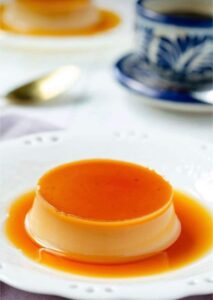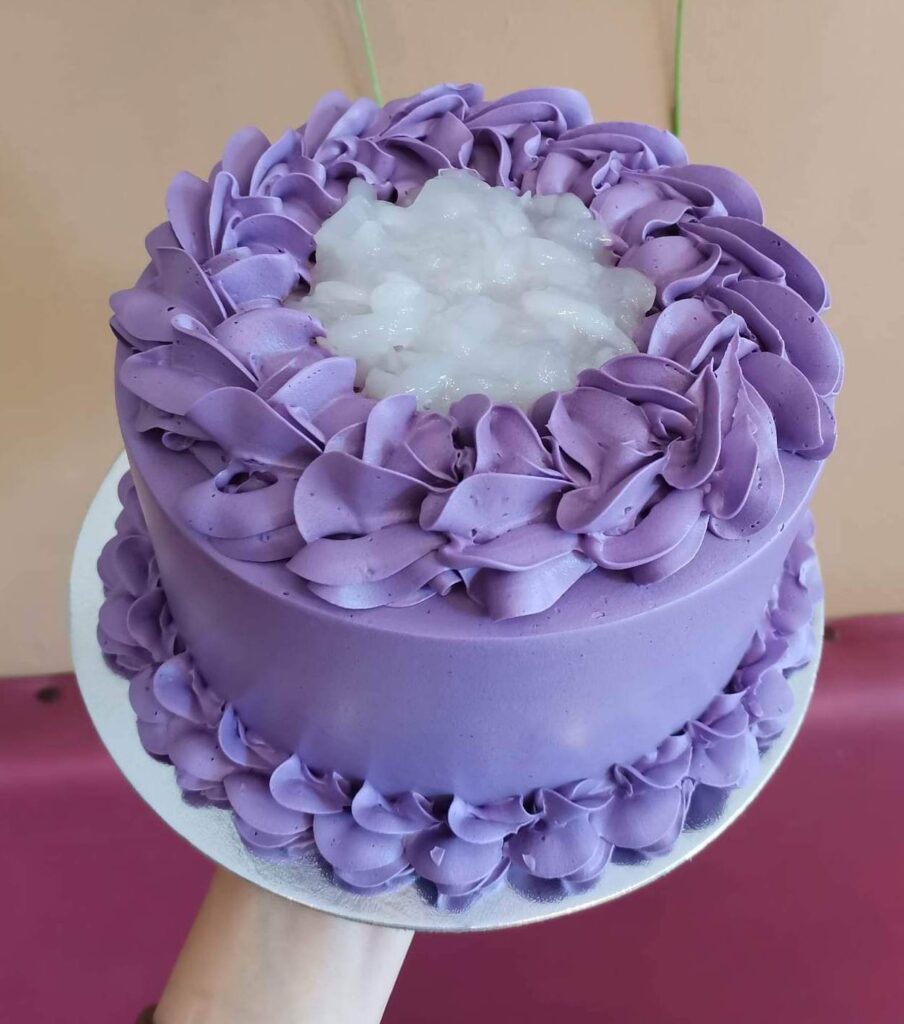When indulging in the diverse world of Filipino cakes and desserts, a common question often arises: how many days do cakes last? From the rich, creamy leche flan to the vibrant ube cake and the refreshing buko pandan cake, each dessert brings its own unique flavors and traditions to the table. Understanding the shelf life and proper storage of these beloved treats is essential for preserving their taste and quality. Whether you’re savoring a slice of sans rival, enjoying a serving of mango bravo, or exploring other local favorites, knowing how long these cakes last can help you make the most of their delightful flavors while ensuring they remain safe and delicious to eat.
1. Leche Flan

Origin: Leche flan is a classic Spanish dessert brought to the Philippines during the Spanish colonial period. The traditional Spanish flan was adapted to local tastes using available ingredients like condensed milk and evaporated milk. In the Philippines, leche flan has become a staple in Filipino households, especially for special occasions and festive gatherings.
Popular Areas: This dessert is widely enjoyed throughout the Philippines, particularly in Metro Manila, where it’s a common feature at celebrations such as birthdays and fiestas. Its rich, creamy texture and caramel flavor make it a favorite across various regions.
Shelf Life: Leche flan typically lasts 4-5 days when stored in the refrigerator. Its high dairy content makes it prone to spoilage, so it’s best consumed within this period.
Storage: To keep leche flan fresh, store it in an airtight container in the refrigerator. Ensure it’s properly covered to prevent it from absorbing other odors and to maintain its smooth texture.
2. Bibingka
Origin: Bibingka has deep roots in pre-colonial Filipino cuisine, with influences from Spanish and Portuguese baking techniques. Traditionally, bibingka was baked in clay pots lined with banana leaves, giving it a distinct aroma and flavor. The dish was traditionally enjoyed during the Christmas season, but its popularity extends year-round.
Popular Areas: Bibingka is particularly popular in Metro Manila, Batangas, and Laguna. These areas are known for their traditional preparation methods and variations of bibingka, often enjoyed during the Christmas season or other special occasions.
Shelf Life: Bibingka is best enjoyed fresh. When stored at room temperature, it typically lasts 2-3 days. If refrigerated, it can last up to a week, but the texture may become denser.
Storage: Store bibingka in an airtight container to prevent it from drying out. If you prefer to keep it for a longer period, refrigeration is recommended. Reheat or warm slightly before serving to restore some of its original texture.
3. Puto
Origin: Puto is a traditional Filipino steamed rice cake with roots in indigenous Filipino cooking, further influenced by Spanish and Portuguese baking traditions. It’s made from rice flour and coconut milk, often enjoyed as a side dish or snack.
Popular Areas: Puto is commonly found in Tagalog-speaking regions, including Metro Manila, Batangas, and Quezon. Each area has its own version, with variations in flavor and toppings like cheese or salted egg.
Shelf Life: Puto generally lasts 2-3 days at room temperature. If refrigerated, it can be kept for up to a week, although its texture might become slightly dry.
Storage: Store puto in an airtight container to retain its moisture. If you want to reheat it, you can steam it briefly to bring back its softness.
4. Ube Cake

Origin: Ube cake features ube (purple yam), a staple ingredient in Filipino desserts. Ube has been used in Filipino sweets for generations, and the cake itself became popular in the late 20th century as Filipino bakeries began to experiment with this vibrant ingredient.
Popular Areas: Ube cake is enjoyed nationwide, with notable popularity in Metro Manila and Baguio. Baguio is known for its fresh, high-quality ube and innovative dessert offerings.
Shelf Life: Ube cake typically lasts 4-5 days when refrigerated. Its shelf life can be extended if frozen, where it can remain good for up to 2 months.
Storage: Keep ube cake in an airtight container in the refrigerator to maintain its flavor and texture. For longer storage, freezing is an option, but ensure it’s well-wrapped to prevent freezer burn.
5. Sans Rival

Origin: Sans Rival is a French-inspired dessert that was adapted to Filipino tastes. It combines meringue with rich buttercream and often features chopped nuts, creating a decadent, multi-textured treat.
Popular Areas: Sans Rival is particularly popular in Metro Manila and Cebu. Cebu, known for its vibrant pastry scene, has put its own spin on this classic, making it a local favorite.
Shelf Life: Sans Rival usually lasts 3-5 days when stored in the refrigerator. Its delicate meringue layers and creamy filling make it best enjoyed within this period.
Storage: Store Sans Rival in an airtight container in the refrigerator. If you need to keep it for a longer period, freezing is possible for up to 1 month, but be aware that the texture might change slightly upon thawing.
6. Mango Bravo
Origin: Mango Bravo is a relatively modern Filipino creation that incorporates fresh mangoes into a layered dessert. The combination of mangoes with cream and sometimes meringue reflects both local and international influences in Filipino dessert-making.
Popular Areas: This dessert is especially popular in Metro Manila, where numerous bakeries and dessert shops feature their versions of Mango Bravo. Its appeal has also spread to other urban centers like Cebu and Davao.
Shelf Life: Mango Bravo typically lasts 3-4 days when refrigerated. The fresh mangoes used in the cake make it more perishable than some other desserts.
Storage: Store Mango Bravo in an airtight container in the refrigerator. For longer storage, it can be frozen for up to 1 month, although this may affect the texture of the mango and cream layers.
7. Cassava Cake
Origin: Cassava cake is made from grated cassava, a root vegetable native to South America. The dessert was adapted to Filipino cuisine and has become a popular treat due to its unique texture and sweet, coconut flavor.
Popular Areas: Cassava cake is commonly enjoyed throughout the Philippines, with notable popularity in the Visayas region, including Cebu and Iloilo, where cassava is a common ingredient in local dishes.
Shelf Life: Cassava cake can be kept for 4-5 days when refrigerated and up to 2 months if frozen. Its dense, chewy texture makes it relatively stable.
Storage: Store cassava cake in an airtight container. It can be frozen for longer storage, and should be thawed and reheated before serving to restore its original texture.
8. Buko Pandan Cake
Origin: Buko Pandan Cake combines the flavors of young coconut (buko) and pandan leaves, which are native to the Philippines. This dessert is known for its light, refreshing taste and has become a popular choice for special occasions.
Popular Areas: Buko Pandan Cake is widely loved across the Philippines, particularly in Metro Manila, Cavite, and Laguna. Its popularity is due to its unique combination of flavors and light, creamy texture.
Shelf Life: This dessert typically lasts 3-4 days when refrigerated. Its freshness is key to enjoying its delicate flavors.
Storage: Keep Buko Pandan Cake in an airtight container in the refrigerator. It is best enjoyed chilled, and should be consumed within a few days for optimal flavor.
9. Tiramisu
Origin: Tiramisu is an Italian dessert made with layers of coffee-soaked ladyfingers and mascarpone cheese. Though not originally Filipino, it has been widely embraced in the Philippines, with adaptations incorporating local flavors.
Popular Areas: Tiramisu is enjoyed throughout the Philippines, with notable popularity in Metro Manila and Cebu, where international and fusion cuisine is more prevalent.
Shelf Life: Tiramisu generally lasts 3-4 days when refrigerated. Its creamy texture and dairy content make it more perishable.
Storage: Store tiramisu in an airtight container in the refrigerator. It usually does not freeze well due to its creamy texture, so it’s best consumed within a few days.
Knowing how many days does cake last can significantly enhance your enjoyment of these Filipino culinary treasures. Each cake and dessert has its own shelf life and storage needs, ensuring that you can savor the rich flavors and textures at their best. From the decadent leche flan to the delightful ube cake, being aware of how long each dessert stays fresh helps you plan ahead and make the most of every bite. By following proper storage guidelines and keeping track of their longevity, you can enjoy these traditional treats for as long as possible while maintaining their delicious quality.







